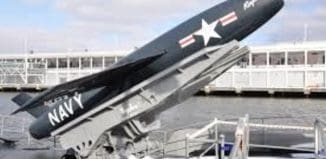U.S. to defend against russian cruise missiles
This post is also available in:  עברית (Hebrew)
עברית (Hebrew)
 The Pentagon is working on setting up a network of defenses to protect American cities from a barrage of Russian cruise missiles. This includes buying radars that would enable F-16 fighter jets to detect and intercept low-flying missiles, coastal warships with sensors to detect and intercept missiles on their own, along with using sensor-laden aerostat baloons hovering over U.S. cities.
The Pentagon is working on setting up a network of defenses to protect American cities from a barrage of Russian cruise missiles. This includes buying radars that would enable F-16 fighter jets to detect and intercept low-flying missiles, coastal warships with sensors to detect and intercept missiles on their own, along with using sensor-laden aerostat baloons hovering over U.S. cities.
Although this plan has not been publicly revealed, statements in congressional hearings and other public forums over the past year reveal the Pentagon’s concern about missiles being developed by Russia.
In recent years, the Pentagon has invested in preparations to shoot down long-range rockets that touch the edge of space and then fall toward targets on Earth. Experts say North Korea and Iran are the countries most likely to strike the U.S. or its allies with such missiles, although neither has missiles of sufficient range so far. The threat of low-flying missiles, however, has been much less dealt with so far. The main threat in such cruise missiles is that they are powered throughout their flight, which allows them to fly close to the ground and go undetected by radars.
Lately, several warnings regarding such missiles have been heard in the U.S. and are now starting to be dealt with, as cruise missiles technology in countires posing a threat to the U.S., such as Russia and China, is constantly being developed.
An example of this is the Kh-10- an air-launched cruise missile with a reported range of more than 1,200 miles, being developed in Russia.
As well as aerial and coastal protection, ground systems with sensors and radars could be installed around major cities and infrastructures, offering added protection to core sites across the country, especially the national capital region.






























